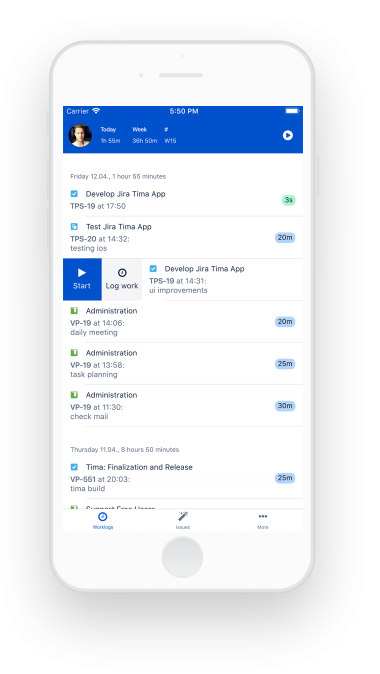

Time in Status reports can be accessed through its own reporting page, dashboard gadgets, and issue view screen tabs.

It supports both Company Managed and Team Managed projects.
#Jira free time tracking install
The app calculates its reports using already existing Jira issue histories so when you install the app, you don't need to add anything to your issue workflows and you can get reports on your past issues as well. The ability to group by parts of dates (year, month, week, day, hour) or sprints is particularly useful here since it allows you to compare different time periods or see the trend. For example total in-progress time per customer (organization) or average resolution time per sprint, week, month, issuetype, request type, etc. Measurements like Issue Age, Cycle Time, Lead Time, Resolution Time etc.įor all numeric report types, you can calculate averages and sums of those durations grouped by the issue fields you select. It is the most flexible way to get any measurement you might want. This feature allows you to combine the duration for multiple statuses into a single column and exclude unwanted ones. The app has Consolidated Columns feature. You just need to make sure that issue statuses are updated on time. This way, you can see how much time each issue spent on statuses that represent work. Time in Status mainly allows you to see how much time each issue spent on each status and on each assignee. It is available for Jira Server, Cloud, and Data Center. Our team at OBSS built Time in Status for this exact need. You'll need to use a marketplace app for that. If you don't want your users to enter worklogs manually, the next best thing is to try to do the same through issue workflow statuses. I should say upfront that the most healthy way to get this data is by making users enter worklogs. Note, you can change minutes at step 6 also to seconds, hours, etc. Go to the second rule and see the audit log, there should be your time in status. Wait a bit, then transition to status chosen in step 5. Now transition an issue to the status which you choose at step 2. Later you can use the variable in a Jira field to store it (or automatically create a worklog of it). For now, use a Log action, to see if things are working.Create another rule with an 'Issue transitioned' trigger, but now when you move out of the status.One for start time, one for total time spent.Ĭreate an action of type 'set entity property' I advice you to use Jira issue properties. Now you should have a place were you can keep the time you want to capture.Add the 'Issue transitioned' trigger & select a from and to status.go to your project > Project settings > automation > Create rule.Because it is more flexible and you can maintain it more easily. I think it is better to use Jira automation instead of post-functions.


 0 kommentar(er)
0 kommentar(er)
